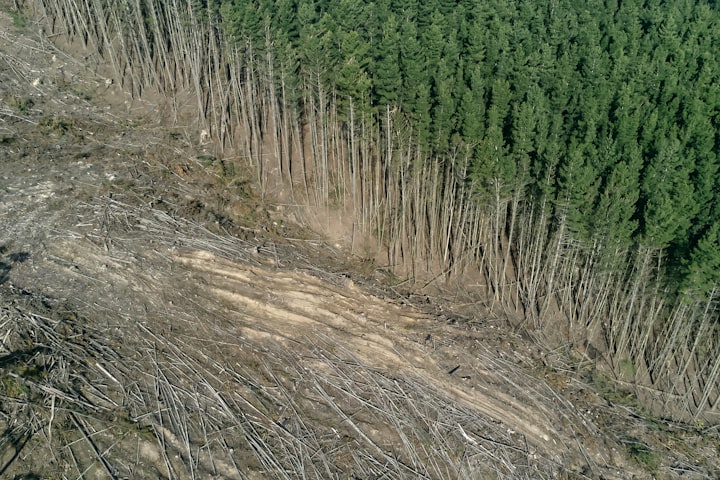Deforestation information shows that consuming of woods to make farming area prompts total deforestation and land corruption. Notwithstanding deforestation, developing timberlands are additionally influenced by environmental change, which expands the danger of tempests and sickness. In 1990, an expected 420 million hectares of timberland were lost through movement, yet in the course of recent many years, the pace of deforestation has dropped.
Albeit woods regions have declined universally in the course of recent many years, the pace of deforestation has declined because of development and practical administration. As indicated by the 2020 Worldwide Backwoods Assets Evaluation (FRA 2020) (Worldwide Woods Assets Appraisal) the pace of woodland misfortune diminished somewhere in the range of 2015 and 2020 by an expected 10 million hectares (MHA) to 12 million hectares (MHA).
As indicated by information delivered today by the College of Maryland, by 2020 the planet will lose more tropical backwoods space than the UK, including more than 42 million hectares of tropical jungles. Deforestation is expanding in both tropical and subtropical regions, however, the increment in misfortunes is huge in the main tropical backwoods, prompting expanded deforestation and the development of flames in the Amazon, the world's biggest tropical jungle.
Somewhere in the range of 2014 and 2018 in Latin America, Southeast Asia, and Africa, huge tropical jungles, yearly tree misfortunes expanded contrasted with 2001 to 2013. last year there was some sort of deforestation (rural logging and other new land use) in the Brazilian Amazon (read more with regards to the different information sources here).
As indicated by WRI, essential timberland misfortunes were up to multiple times higher in the Pantanal, the world's biggest wetland region, by 2020 than in 2019 as far-reaching fires have burned through just about 33% of the climate. As per information from the planet, the space of lost trees by 2020 was bigger than in the UK, including more than 42 million hectares of tropical jungles. Around 33% (11.9 million hectares) of the tree cover, or 3.8 million hectares, was determined by low tropical jungles, a space of mature tropical jungle that is significant for biodiversity and carbon transport.
As per the World Bank, somewhere in the range of 1990 and 2016 1.3 million square miles [1.3 million sq km] of woods is lost on the planet, which is something beyond South Africa. As indicated by a recent report in the diary Nature, 46% of the world's trees have been felled since people started deforestation. In the Amazon area, for instance, 17% of backwoods have been lost in recent years because of deforestation.
Woods cover around 30% of the world's surface and are vanishing at a disturbing rate. Universally, the space of England's comparable backwoods is lost each year, and its vast majority is tropical jungles, which detrimentally affect environmental change and natural life. Timberlands are presently being lost on the planet's most basic locales, particularly in agricultural nations, for example, the Amazon tropical jungle, the Congo lake, and the Indonesian tropical jungle.
Deforestation and deforestation proceed at a disturbing rate, adding to the proceeded loss of biodiversity. Deforestation is a significant worry in tropical jungles, where the world's biodiversity is concentrated. The vast majority of the world's surface is occupied by timberlands and creatures and plants, and deforestation compromises species like orangutans, Sumatran tigers, and numerous types of birds.
Eight percent of the world's endemic species, like elephants and rhinos, live in backwoods. Deforestation influences the two people and creatures, and trees are being chopped down around the world. More than 250 million individuals living in woods and savannas rely upon these timberlands for their work, including numerous poor rustic occupants.
In low-lying regions (short of what a couple of individuals for each square kilometer) huge thick backwoods might be kept up with where individuals can uphold the collection of non-wood horticultural items. [4] Unfamiliar forces, like the interest in wood and domesticated animals from different pieces of the nation or the world, could prompt deforestation inconsequential to neighborhood development. Because of overpopulation, backwoods development is firmly connected to populace development and deforestation happens when neighborhood individuals, particularly little transient families showing up at woodland limits, develop land to give extra farmland to subsistence.6 Because of helpless soil quality and low agrarian usefulness per hectare, more land per individual. each might be opened.
Zeroing in on deforestation in tropical and subtropical tropical jungles permits us to feature a portion of the world's most basic woods regions where misfortune is probably going to have long-haul impacts. The nations that have lost the most woods every year are Brazil, the Majority rule Republic of Congo, Indonesia, Angola, Tanzania, Paraguay, Myanmar, Cambodia, Bolivia, and Mozambique.
Since the reception of the New York Statement of Woodlands, deforestation has expanded by 43%, with low and valuable tropical backwoods being cleared from timberlands in an extended time of 43 million hectares. The primary target of the Announcement is to stop deforestation by 2030 and to save as much carbon as vehicles on the streets from the beginning (how the Presentation was made).
While the all-out deforestation rate dropped somewhere in the range of 1990 and 2020, there was no decrease in deforestation in nations that extended their woods region without deforestation and deforestation, the report added. Eleven nations that raised their 1990 evaluations, including Costa Rica, Ethiopia, and Kenya, have seen a net expansion in the $ 215 million backwoods regions, or 13% of the assessed esteem, since 1990.
About the Creator
Dip Rai
I am a content writer and love to Code.






Comments
There are no comments for this story
Be the first to respond and start the conversation.